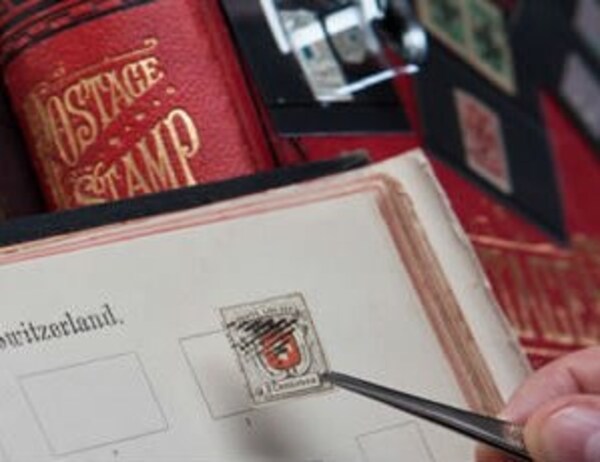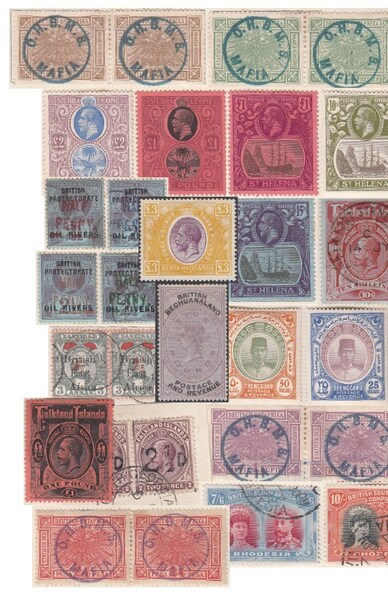An unsolved philatelic mystery
Perhaps Detective Hercule Poirot, the Express D'Orient's most famous fictional passenger, could help us to solve the mystery surrounding these unusual labels!
There are many unanswered questions regarding the origin and use of these atmospheric stamp- size imperf labels that are occasionally found on covers sent from the British and German Levant Post Offices between 1883 and 1900.
The Levant is the name given to the Eastern Mediterranean coastal area of the former Ottoman Empire. The philatelic history of the Levant is fascinating with Post Offices operated by the Austrian, British, French, Italian and Russian powers. These imperforate gummed labels are normally cancelled by a postmark from one of these foreign post offices, most commonly those of the British and German offices at Constantinople. These 'express' labels do not have a denomination.
They are either a rusty red colour, sometimes described as salmon, or more rarely black. Both incorporate the same design, a diagonal white stripe running from the top left hand corner to the lower right within which are the words “Express D'Orient”. There is a white star and crescent emblem in the top right corner.
Only a few partial blocks of unused labels are known, together with cancelled single labels and those on full covers.
We are particularly pleased to be able to offer an example of a salmon coloured 'express label' that is tied to a piece with an unusual blue double ring cancellation reading “Chemins De Fer Ottomans (star and crescent design) B.V”. The “Chemins De Fer Ottomans d’Anotolie” was an Ottoman railway founded in 1888 and subsequently became one of the busiest railways in the Ottoman Empire.
Why were the labels needed? Why were two different colours used? Who printed them? Why weren't they used in both directions? These are just a few of the unanswered questions.
The inaugural Express D'Orient left the Gare D'Est in Paris on the 4th October 1883 bound for Constantinople via Munich, Vienna to Giurgiu in Romania from where a combination of ferries and other trains carried the passengers on to Constantinople. The train offered the wealthy an opportunity to avoid an otherwise long and uncomfortable overland journey of over 1800 miles.
There are clues to help in finding a few of the answers and develop some theories. During the early period from 1883, whilst the train did carry mail, it was not a priority and there was no designated mail car but the advantages of using a faster method was soon recognised and the volume of mail carried increased dramatically. The journey time to Austria and Hungary was reduced to two days from where the mail was distributed to onward destinations.
The most likely explanation for the labels use was as documentary proof that the mail was to be carried on board the 'Express D'Orient', the correspondence would then be identified, sorted and directed accordingly. A fee would be paid to the railway operator, either the Compagnie des Wagons-Lits or Chemins De Fer Ottomans. It is interesting that the labels are identical miniature versions of the larger labels used on passenger luggage carried on board the train. Did the different colours used signify a different Class of travel? This seems unlikely, as all the passengers were wealthy and there was only First Class! Possibly the colour used signified on which of the twice weekly departures the mail was to be carried or alternatively the colour might indicate the final destination or the discharge station en-route. It is even possible that two colours generated more revenue from those wishing to send home interesting curios! Whilst during the late 19th century many Ottoman Empire stamps were engraved and printed in France, it seems more likely that sheets of both the luggage and stamp labels were produced in Constantinople by a local firm of printers. These are theories but it does not appear that the express labels were ever used on mail leaving from Paris on the Orient Express.
This label represent an interesting piece of philatelic history with a strong link to an iconic and internationally famous passenger express train, but perhaps even Poirot would have difficulty in solving this philatelic mystery!
 General
General
 General
General
 General
General